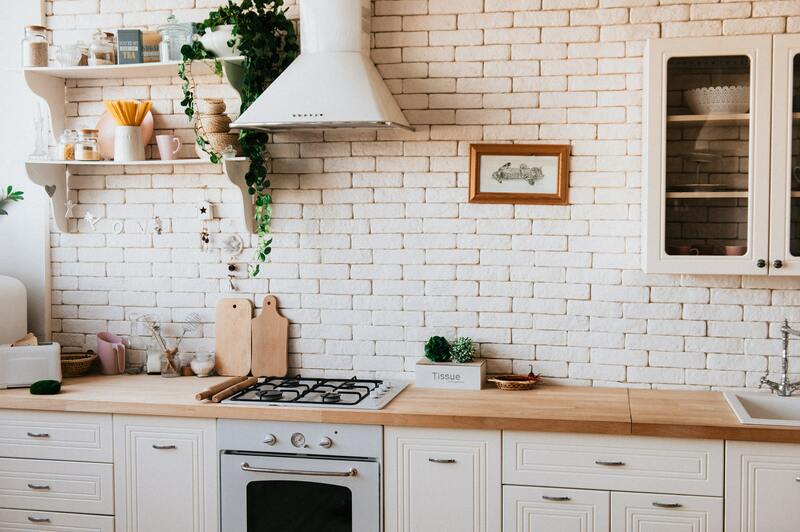A funky smell from your dresser might warrant asking how to remove odor from water damaged cabinets. After all, the cause of the smell might be infiltrated water.
Some household ingredients may do the trick. Read on to learn more about water-related situations.

How Do You Get Rid Of The Smell Of Water Damage?
Step #1. Dry it out
Since we’re talking about water damage here, the first thing you should do to deal with the odor is dry out the cabinet’s affected parts. When you take out all the contents, you can quickly identify where the water damage is.
Drying your cabinet makes a perfect opportunity to break out a dehumidifier or an electric fan to speed up the process. For added measures, you can also open the windows.
Step #2. Check for mold or mildew
At this point, you might already be aware that moisture can create the right conditions for mold or mildew to grow.
Also worth mentioning is mold or mildew, regardless of the cause, can spell numerous health problems. In addition, mold or mildew can be one of the culprits of foul odors.
As such, you ought to deal with mold or mildew right away.
There are quite a few household substances you can use to combat the nasty stuff. You can use diluted chlorine bleach, hydrogen peroxide, distilled white vinegar, baking soda, or borax.
Remember to put on protective equipment such as gloves, masks, and goggles while cleaning to prevent infection from exposure to the stuff. Also, you may want to leave the substances alone for a while before rinsing to ensure mold or mildew is wholly gone.
If you need some advice on how to go about removing mold, here’s a helpful article detailing how to remove mold from water damage.
Step #3. Clean the area
Water damage doesn’t warrant your run-of-the-mill cleaning procedures. You’ll have to employ a different technique in handling water-damaged spots.
Remember the vinegar from the mold and mildew removal? It may surprise you how effective vinegar can also be as a cleaning and deodorizing agent.
Mix one part of warm water and one part of vinegar in a spray bottle. When you have your solution, you can spray the water-damaged areas or sources of odor.
You can wipe the solution on the surfaces with a clean cloth if you want.
You can also bring back the baking soda from the previous procedure to neutralize any lingering odor for added measure. Simply sprinkle the water-damaged surfaces or other surrounding areas with baking soda.
Baking soda will absorb any nasty odors and excess moisture, which will come in handy when dealing with your odor problem.
After applying the vinegar solution and sprinkling baking soda, you can leave the cabinet overnight. If the smells are no longer around, you can sweep or vacuum away the baking soda after it serves its purpose.
How Do You Prevent Water Damage From Striking Again?
Taking care of leaks
As they say, prevention is better than cure. You’ll want to ensure that you can take measures to keep pesky odors from happening again after you deal with them.
If we’re talking kitchen or bathroom cabinets, leaky pipes or plumbing may cause water damage. Carefully inspect your plumbing fixtures to see if water drips.
Even if you don’t see noticeable dripping, it’s better to be safe than sorry.
With a dry tissue, wipe the pipes. If some parts of it get wet, that’s a sign you have a leak that you need to take care of.
Contact your local plumber, or if you can, you can DIY the repairs.
Moreover, pipes may not be the only place excess water could drip. You’ll also have to check sink rims.
You can check by dribbling water around the sink rim and faucet base using a sponge. Afterward, check the bottom cabinet with a flashlight to see if any water drops below.
You’ll have to seal off your sinks and the nearby surrounding surface.
Take note that gaps will begin to form over time after you apply seals. Regularly replace the seals to prevent water from penetrating them.
Waterproofing your cabinets
You can try out a few materials and substances to ensure water or moisture doesn’t damage your cabinets.
You can try some of the following:
- Spray-on rubber coating
- Rubber matting at the base of your cabinets
- Peel-and-stick vinyl floor tiles
- Polyurethane sealer
You might even want to consider a new paint job for good measure.
Simply sand the wooden surfaces, apply primer, paint using the color of your choice, and most importantly, apply some waterproof varnish.
If you need more tips on how to go about dealing with water damage, here’s a handy guide on how to treat water damaged cabinets at home.
Conclusion
This sure is an information overload. However, knowing the steps to take in dealing with water damage goes hand in hand with knowing how to remove odor from water damaged cabinets.
Always maintain your cabinets and heed this advice to prevent bad smells from coming from them.
